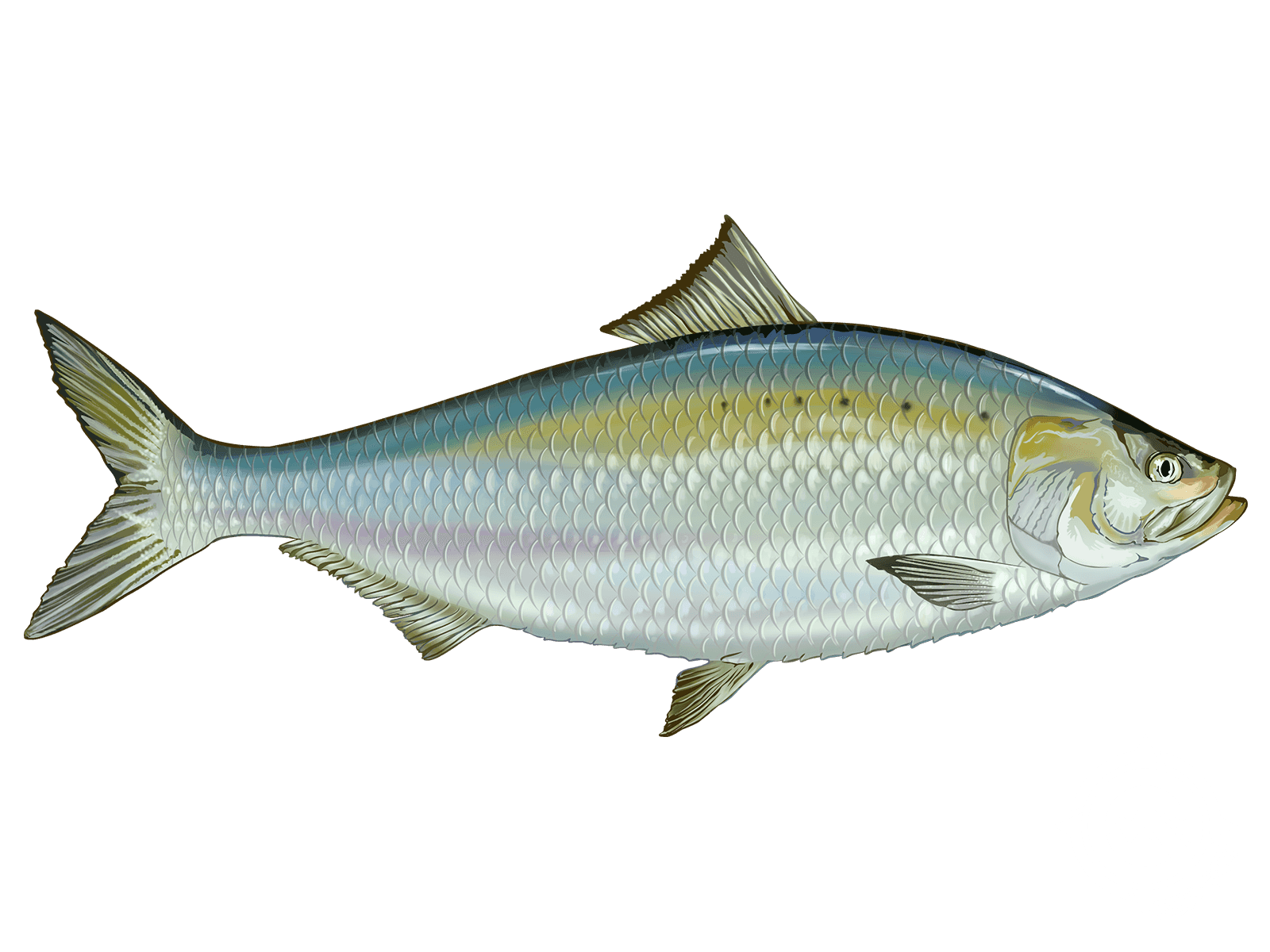Shad

Species Details
Alosa Sapidissima
Clupeidae
Clupeiformes
Lake, River
2 - 5 lbs.
6" - 25"
Shad (Alosa sapidissima) Fish Description
The Shad (Alosa sapidissima) or sometimes called the American shad is one of the most favourite gamefish targets for anglers—especially for those fishing for food—because of its delicate flavour. It can be cooked in many ways including boiling, baking, frying, grilling, etc. Its meat is flavorful enough when cooked that one wouldn’t need sauces, herbs, and spices to create a sumptuous meal from the fish. Its roe (or eggs), on the other hand, are so tasty, it’s considered a delicacy in some parts of the country.
Shads have typically thin, silvery bodies with a prominent row of dark spots on their shoulders. They also have deeply forked tails and saw-like scales (or scutes) along their bellies. An angler can naturally find these fish swimming in schools in the Atlantic coast; though they were also introduced into the western coasts, particularly in the San Francisco Bay and Sacramento River system in the 1800s. And from there, this highly migratory fish species managed to spread in pretty much all the coastal lines in the US as well as rivers and other water systems from Mexico to Canada. They may also spend their adult lives in the ocean but they are also known to be anadromous, which means that they can adapt well in freshwaters as they spawn in rivers and streams.
Interesting Facts About Shads
- The American shad is the largest shad species.
- The biggest one ever caught on record was two feet and six inches long.
- They usually feed on plankton as well as small crustaceans and fishes.
- The shadbush is named after the fish as the plant blooms when the fish returns to the rivers to spawn.
- Female shads are typically three times bigger than males.
- During mating season, male shards communicate with females to release their eggs by nudging their bellies.
- The females release their eggs into the open water and the pursuing males fertilize them.
- They can swim almost twenty thousand kilometres in their lifetime.
- They may frequent the coastal waters during spring, summer, and fall; but swims to the deeper parts of the ocean during winter seasons.
- Nearing the end of winter, they swim back to the coastal areas, into the river systems to spawn.
- A single female can lay between two to one hundred and fifty eggs each season.
- These fish can live from six to ten years in the wild and four to seven years in captivity.
- They can detect ultrasonic signals; and they use this ability to escape predators.
- They also have the ability to darken their colors when they swim upriver; this helps them to blend well in the environment and avoid predators.
- Shads are not only eaten by humans but by other predators as well, including: dolphins, striped bass, bluefish, catfish, and even by some predatory birds and bears.
- Their population has significantly declined over the past decades due to overfishing.
- Hatcheries have been created by the federal government to help boost populations.
- This fish can help in various ecosystems as it feeds and, thus, help regulates population of other invasive fish species and crustaceans.
Shad Speed and Average Size
Shads are social fishes and swim in schools. They don’t swim very fast going upriver and can only clock around three to four kilometres per second on average; although they do have the ability to dart fast away from predators. In the open oceans, however, their average swimming speeds can significantly go higher.
As for the average size, they can grow from 20 to 24 inches in length but can also reach 30 inches in length and weigh up to 12 pounds.
Where to Find Them
Shads can be found in coastal waters within two hundred and fifty meters from the shore during spring, summer, and fall. During winters, they usually go much deeper of up to three hundred and seventy five meters into the ocean as they look for warmer waters. You can find them on warmer months deep into the river systems as they spawn.
In the east coast, the Connecticut River, St. Johns River (Florida), Ogeechee and Savannah Rivers (Georgia), Potomac and Susquehanna Rivers (Maryland and Washington DC), Delaware River, Cape Fear and Tar Rivers (North and South Carolina), and James and York Rivers (Virginia) are popular fishing sites. As for the west coast, the Sacramento River and the Columbia River are known to carry a huge population.
Shad Fishing Tips
Here are some helpful tips for shad fishing:
- As mentioned, these fish usually go upstream to coastal rivers to spawn when the climate is warm. That’s why it’s best that you go fishing in the months of April and May.
- They tend to swim near the shores in an effort to avoid the current as they swim upstream so make sure to fish in the areas where there’s a strong current and cast your line near the shores or within 30 feet from the bank of the river.
- This fish species is particularly not that big so you don’t have to use a heavy rod to catch one. It’s best that you use a long, lightweight spinning or fly rod in fiberglass.
- It’s also best that you use the right lure to attract the fish. Flies in white or yellow with red heads are probably the best option.






